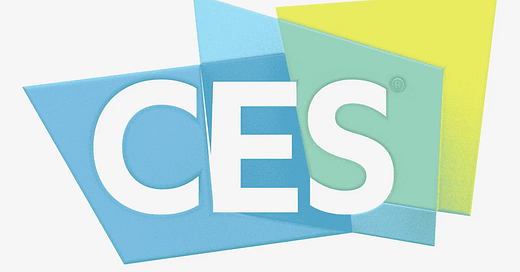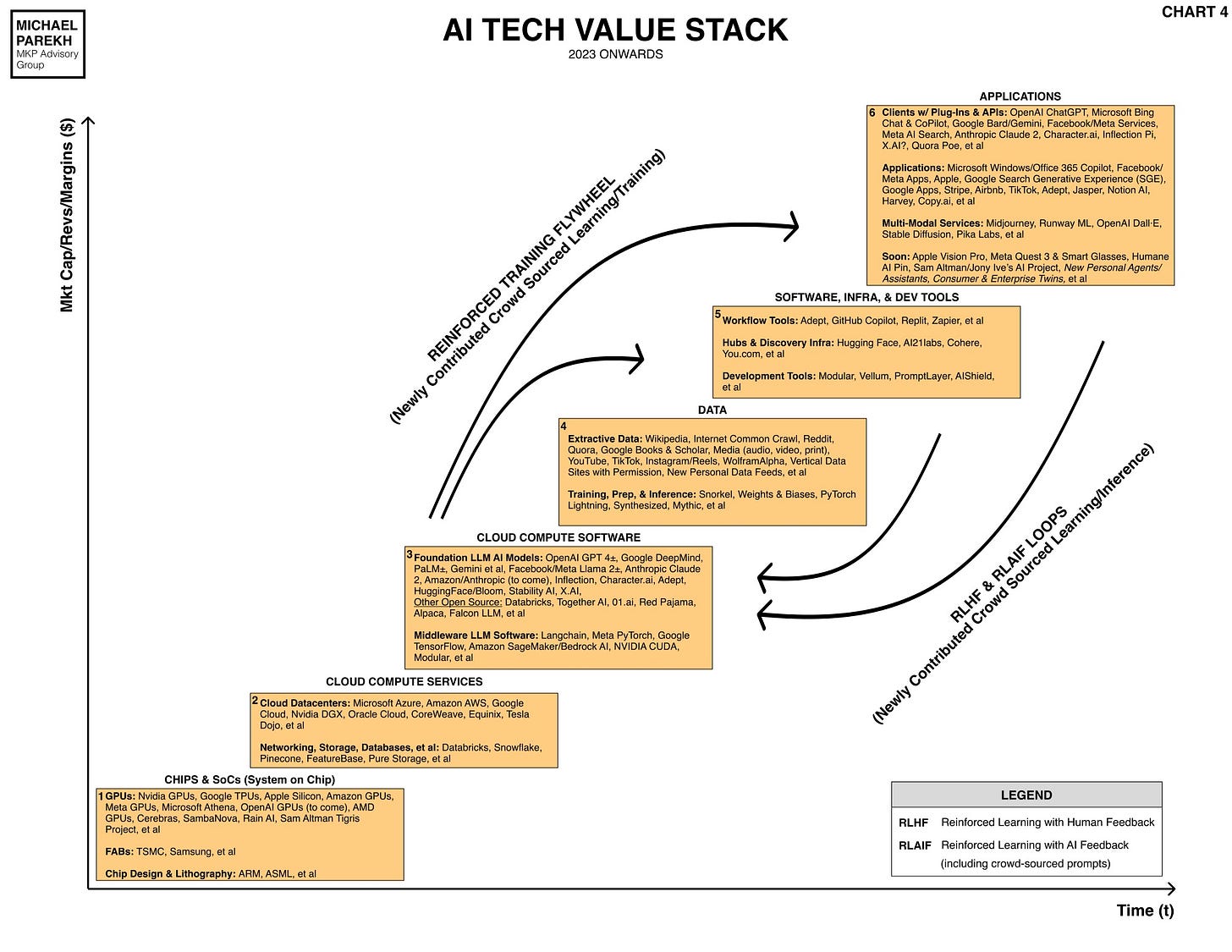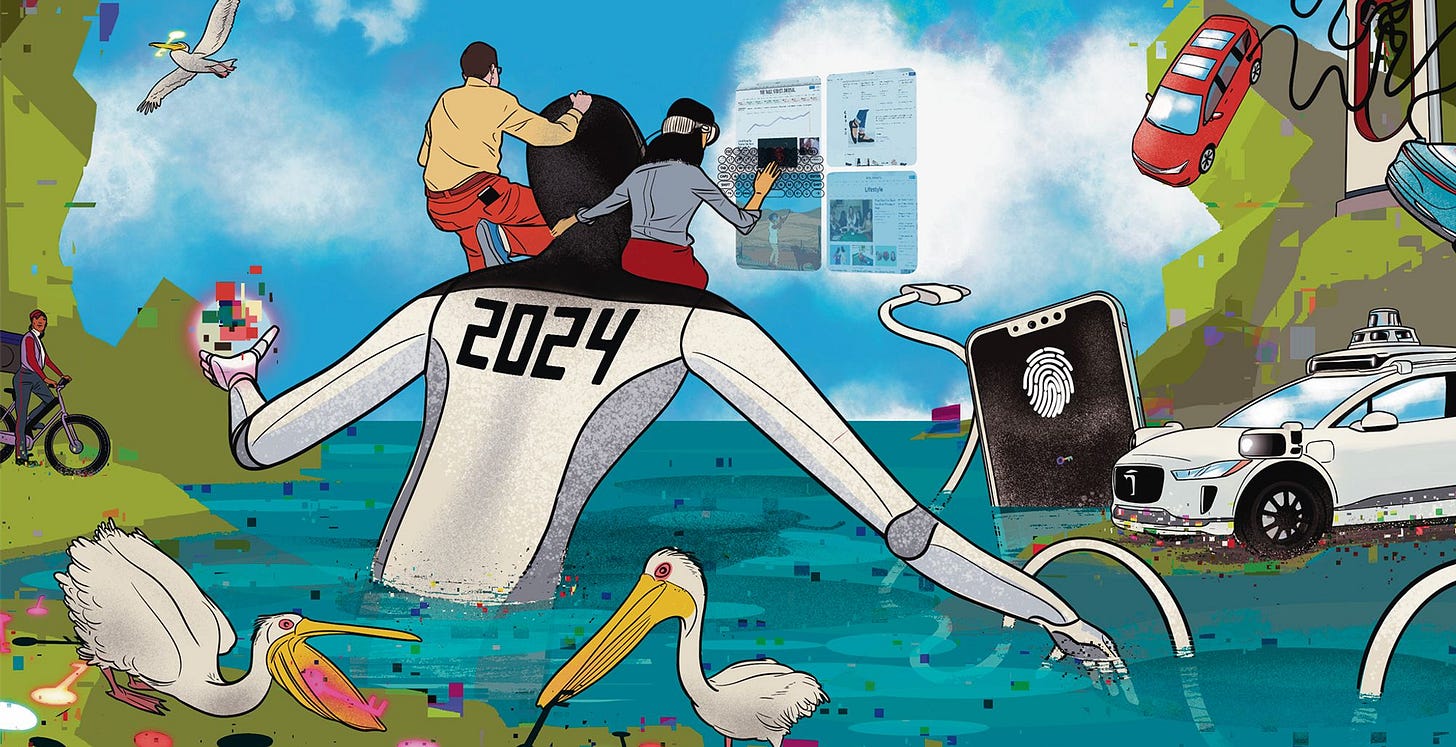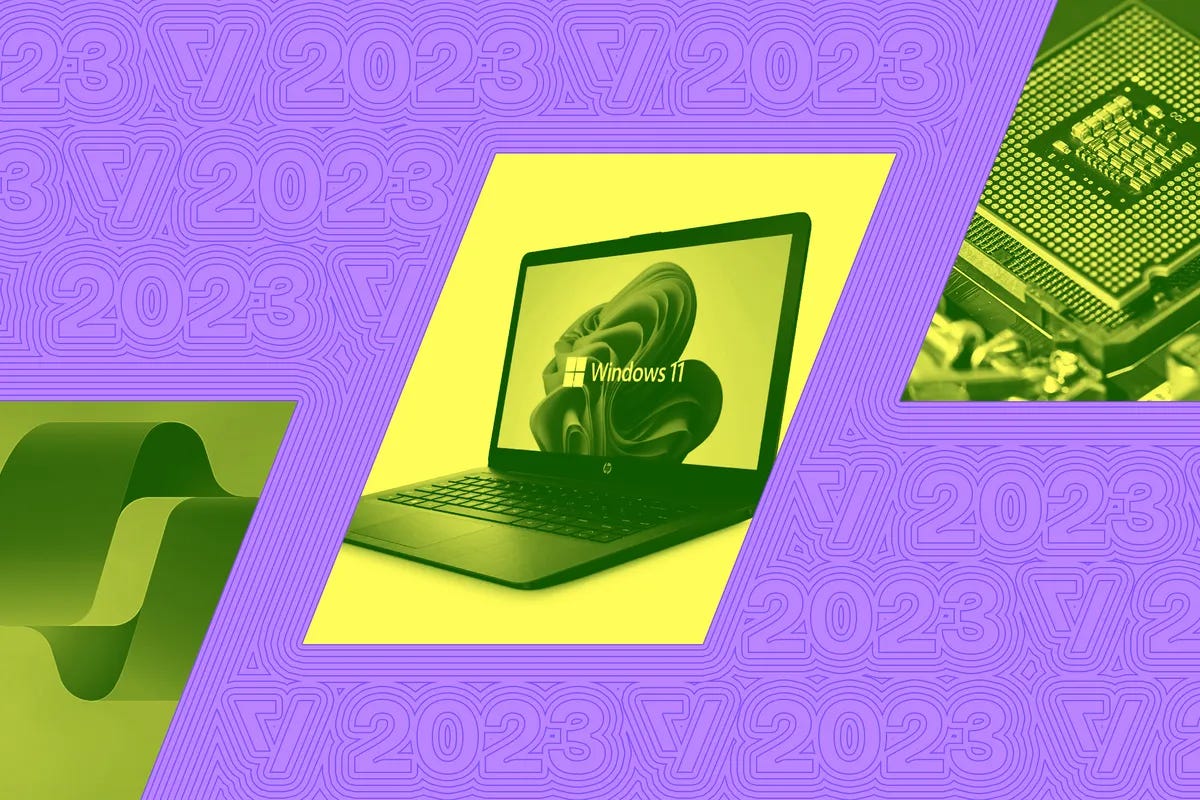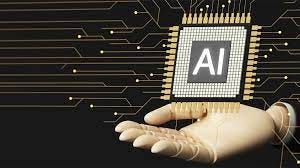Regular readers know I’ve been very focused and vocal about ‘Small AI’ running on local devices being the next AI Tech Wave major trend in 2024, supplementing the multi-hundred billion dollars in ‘Big AI’ investments around Foundation LLM AI models and Nvidia AI infrastructure.
Well, we’re going to see that in spades this year, at the tech industry’s Consumer Electronics Show, CES 2024, which kicks off the tech year annually in January in Las Vegas. As Wired notes in “Get Ready for a ‘Tsunami’ of AI at CES”:
“CES, which kicks off January 9 in Las Vegas, will feature the usual assortment of new consumer tech products. This year, even more of that stuff will be empowered by machine intelligence.”
“CES, the consumer electronics industry’s largest annual gathering in the US, is returning to Las Vegas on January 9. It is a massive, four-day-long bustling bazaar of tech, with expo halls filled to the brim with new gadgets, hopeful startups, and prototypes that reach for the stars. CES is a trade show where sales and distribution deals are inked, where concept cars roll through crowded streets, and where tech journalists and showgoers alike wander the floors looking for the standout new products. And this year, many of the products debuting are going to be garnished with heaping globs of AI.”
“For years, generative AI technology bubbled beneath the surface of public consciousness. It finally burst into the limelight in November 2022, when OpenAI released the first iteration of ChaptGPT. The arrival of the shiny new chatbot kicked off an AI arms race. Since the reverberant waves of this eruption hadn't yet fully saturated the tech industry by the time last year's CES took place, there wasn't really a whole lot of GenAI talk in Las Vegas last January. As a result, CES 2023 looks almost primitive in hindsight, arriving a scant six weeks behind the greatest technological revolution since the mobile phone.”
“That won’t be the case in 2024. “We didn’t get the full CES fire hose of AI announcements last year like we’re going to have,” says Anshel Sag, a principal analyst at Moor Insights & Strategy. “If you thought it was a wave last year, it's going to be a tsunami this year.”
“Expect to see AI everywhere at CES: in cars, scooters, headphones, cameras, speakers, and televisions. In some cases, these products will simply include another way to access a ChatGPT-style question-and-response service to handle spoken commands. But in other cases, the advances could feel more impactful. Companies like Intel, Qualcomm, and AMD are expected to announce chips that support AI services on the devices that carry them. These chips would process AI tasks locally, without having to send a request to a server in the cloud and then wait for a response, making things like computer vision, voice-to-text services, and generative computing feel snappier.”
“CES is where the narrative around industry trends is shaped. Sag says that’s what’s likely to happen with the abundance of AI this CES. “AI is just going to overwhelm everything,” Sag says. “It will be so prevalent and so dominant that some people will just be sick of it.”
Front and center will be tech companies heralding ‘local AI processing’, powered by AI optimized chips, laptops, PCs and other devices. As the WSJ notes:
“In 2024, every major manufacturer is aiming to give you access to AI on your devices, quickly and easily, even when they’re not connected to the internet, which current technology requires. Welcome to the age of the AI PC. (And, yes, the AI Mac.)
“What’s coming is what engineers call “on-device AI.” Like our smartphones, our laptops will gain the ability to do the specialized computing required to perform AI-boosted tasks without connecting to the cloud. They will be able to understand our speech, search and summarize information, even generate images and text, all without the slow and costly round trip to a tech company’s server.”
“On Dec. 14, Intel announced its entrants into this race, chips with built-in neural-processing units. Qualcomm announced similar chips in late October. Both silicon giants will compete to power Windows laptops and Chromebooks. Look for more announcements of chips to enable on-device AI, possibly from Nvidia and AMD. Apple—which brought variations of its neural-engine-equipped mobile chips to laptops and desktops in 2020—will be making that specialized processing power available to software developers in new ways.”
“The hardware will show up before the compelling software applications do, but we’ve already seen some promising demos—like fast AI-powered photo-editing tools.”
Microsoft, whose CEO Satya Nadella, has been leading the AI charge with its partner OpenAI all through 2023, has big plans in addition to its AI Copilot strategy for Github coders, Microsoft Office productivity software users and of course WIndows. Indeed, as the Verge notes:
“Microsoft, Intel, AMD and others are getting ready for a Windows refresh, Arm’s back, and everyone’s betting on AI.”
“Intel and Microsoft have both been dropping hints about a future version of Windows arriving soon and how “AI is going to reinvent how you do everything on Windows.” Rumors suggest that Windows 12 will include a large focus on AI and take advantage of the AI coprocessors that Intel is building into its Core Ultra chips. (Intel isn’t the only one: AMD also has its own Ryzen 7000 mobile processors that include a dedicated AI engine, and these types of neural processing unit (NPU) chips are common on Arm-powered Windows laptops.)”
“Intel held an AI event to launch its Core Ultra chips this month, just ahead of the annual Consumer Electronics Show (CES), where we’ll see all of the new laptops that are powered by Intel’s new chips. Lenovo, MSI, Acer, and Asus are all launching laptops with these new chips inside.”
Of course as I’ve noted before, Apple is also focused on AI integration in its devices starting with the iPhone, which all run on Apple Silicon designed off ARM chips made in TSMC fabs (In addition to Apple Vision Pro ramping next month). Microsoft is also focused in this direction, as the Verge continues to observe:
“The other Windows element is Arm. 2024 looks set to be the next major push for Windows on Arm, with Qualcomm claiming its Snapdragon X Elite processor will beat Apple, Intel, and AMD. Laptops with the Snapdragon X Elite won’t start shipping until mid-2024, but they could offer a solid opportunity for Windows on Arm to finally bring the performance it’s desperately needed.”
The key balancing act here is providing GPU and neural chip horsepower locally to run AI optimized applications and services, along with optimizing power consumption on the devices as well as in the AI cloud data centers.
This is the horse race all the tech companies are going to be focused on ‘Small AI’ run locally at scale starting in 2024. And it begins with showcasing the hardware in chips and devices at CES 2024. Stay tuned.
(NOTE: The discussions here are for information purposes only, and not meant as investment advice at any time. Thanks for joining us here)

